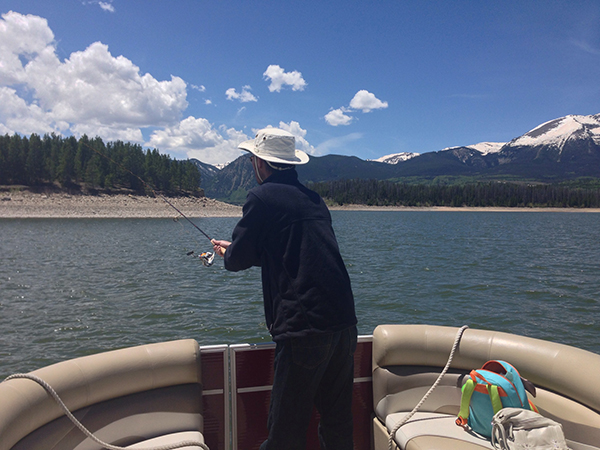
It might not be accurate to call it a “non-tenkara” day. It might be better described as “the opposite of tenkara” or even “Bizarro World“. With all the local streams totally blown out, I decided to try to sneak in a quick fishing opportunity on a nearby lake. My family and I were planning to head to Breckenridge, CO for the weekend and rent a boat on Dillion Reservoir. So I figured, why not dust off the old spinning rod and try something different?
Here’s a picture of Clear Creek – one of my local haunts. To give you an idea, that slide usually empties out onto a sidewalk, not into the water …
It’s funny. A long, long time ago, on a waters far, far away, this style of fishing was my norm and everything about it just felt natural. But after 20+ years of fly fishing and 5 years of fishing tenkara almost exclusively, returning to this once familiar tackle and technique felt strange. Yet I did come away with a few interesting observations…
1. A 6 ft. rod is really short! Having grown accustomed to 13 ft. tenkara rods, a 6 ft. spinning rod feels like an ice-fishing rod or Popeil Pocket Fisherman. I used to consider a 9 ft. fly rod or 6 ft. spinning rod “long” but tenkara has completely reversed that perspective. It took me a little while to get used to the seemingly diminutive length and not overpower casts. But, as they say, it’s like riding a bike, so I got back into the saddle pretty quickly.
2. 10 lb. test feels like a rope compared to 5X. I pretty much only use 5x tippet for all of my tenkara fishing. So it was weird to tie knots with 10 lb. test. Since it’s so much thicker, it was a lot easier to see and work with–almost too easy. The kind of “easy” you’re suspicious of when you have the false pride of believing you’re actually thinking like a fish.
3. Wind is still an adversary–even with a spinning rod and heavy lure. At over 9,000 ft. on an open reservoir, high wind is to be expected. Even with heavier spoons, jigs, & plugs, casting was a challenge. In order to hit the best spots, it seemed like I always had to cast directly into the wind and the boat being pushed in the opposite direction certainly didn’t help me gain any distance (no anchor on board). It was pretty interesting to see a big metal spoon spit back at me as if it were origami paper. I tried wind trolling but that doesn’t really work so well in a pontoon boat when you’re trying to be both the captain and the angler at the same time.
4. I hate treble hooks. Being used to simple, single-hook kebari, Rapalas and spoons with sinister treble hooks seems barbaric (almost as bad as those Japanese squid lures). Having 6-9 hook points on a single lure now seems unfair. Not to mention that they get tangled on everything else that shares a compartment in your tackle box and can cause a lot of unnecessary damage to the fish (and fisherman). I handled these lures as if I had amnesia about the constant threat of their sting and with all the naive caution of someone holding a razor-sharp samurai sword for the first time. I smashed down the barbs on each point just for good measure. If I had had the time, I would have replaced all the trebles with single hooks seeing as (if memory serves), the fish are almost always hooked by a single point and all the other points seem superfluous and as gratuitous as a Tarantino film.
5. Setup is nearly as simple as tenkara. Surprisingly, I was reminded that getting gear together and setting up a spinning outfit is about the same as tenkara. I just grabbed my rod and tackle box, and had everything I needed. On the water, I put the rod together, strung it up, and tied on a lure within just a couple of minutes. Much simpler and faster than setting up a fly rod.
6. Modern spinning reels are engineering marvels. My spinning reel is a Shimano Sahara. It probably sees action only once every few years. But when it does, it performs flawlessly. Every time. The infinite anti-reverse, bail, and drag system are as smooth as the day I bought it despite never getting any TLC such as cleaning or lubrication. I remember when reels were more high maintenance than a mobster’s mistress, but today’s reels are really care free and run like Ferraris even when neglected.
7. Idiot baits can be fun too. When I tenkara fish, I’m mostly imparting action to the fly and really focusing closely on watching the line for a strike. Catching a fish this way gives me a great sense of satisfaction, but it also gives me tunnel vision and doesn’t afford a lot of time to take in the surroundings. With idiot baits (the kind that you just cast out and reel back in), you have the luxury of looking around, relaxing, or just having a conversation while waiting for that tell-tale tug on the end of the line. It might not be as skillful as sasoi, but it was kind of a refreshing, no-pressure diversion.Spinning gear can give you the luxury of enjoying the scenery behind you or the beautiful girls right in front of you!
8. A 2-year old can drive a boat! Either she’s really smart or her daddy is an idiot but I let my 2-year old daughter take control of them helm several times and (with a little coaching turning left or right to avoid collisions with other boats) she was a natural. I’ll probably be more nervous about the first time she drives a car than I was with her navigating this massive body of water.
OK, turn that way honey. Honey, turn! NO, TURN THAT WAY!!! HONEY, NOW!!!
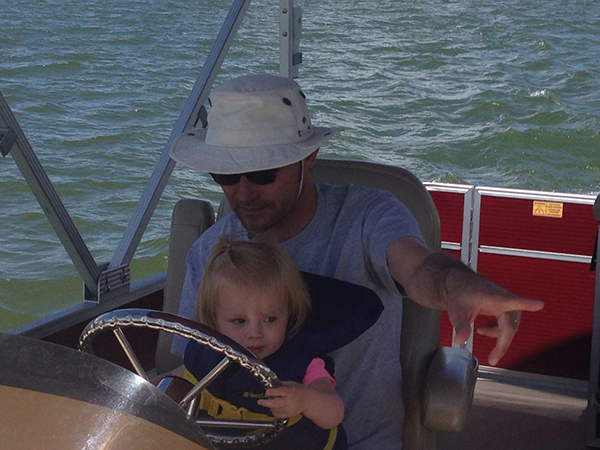
9. I want a boat! I’ve always wanted a boat. Since my teenage years when my grandpa used to take me saltwater fishing in Florida and New Jersey, I’ve always felt at home on docks and in marinas. I love the intimacy in wading and stream fishing, but there’s something magical about the waves lapping up against a hull, the squeaks of buoys against weather-worn docks, and the sound of seagulls in the air while you’re loading a vessel to prepare for a long day out. It’s a different kind of adventure. I miss that. And I miss the lull of being out in open water where you can’t see the shore. That sense of isolation has always been both precious and scary to me at the same time. One day, I want to make that a part of my regular life instead of just dreaming about it.
10. You can’t always get what you want. Yep, the Rollings Stones were right (again). Sometimes, when you feel that you’ve “mastered” one genre of fishing, you get cocky and think you can nail another one. But either the fish or the weather can mercilessly humble you. Well, this time, I learned that no matter which fishing method we choose, we’re all still subject to nature. And many times, when we catch fish, it’s more a matter of luck or timing than our skill. I like to catch fish and am disappointed when I don’t, but am much happier being on the water and going fishless than being in the office and not being on the water.
I try to learn something every time I go fishing. While this wasn’t my “ideal” outing, I feel like it put a lot of things into perspective for me. Oh, in case you’re wondering, no, I didn’t catch a damn thing. But I did land some insights. And, sometimes, getting a handful of perspective is more valuable than coming away with a stringer full of fish.


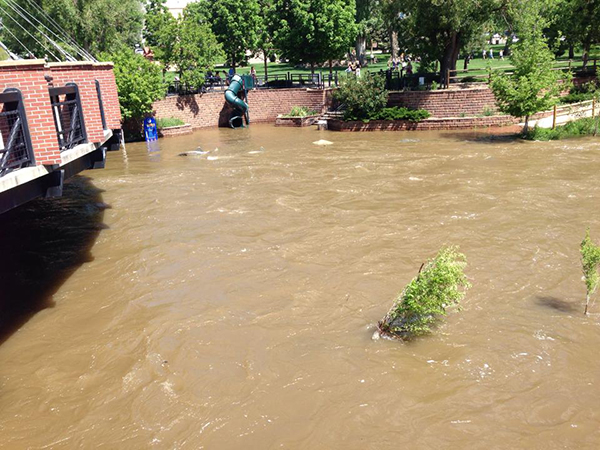
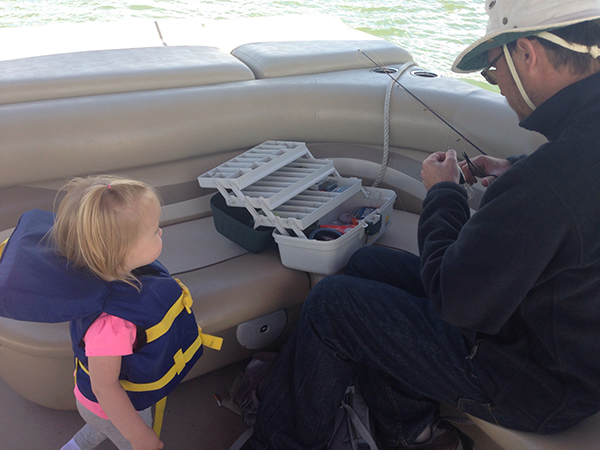
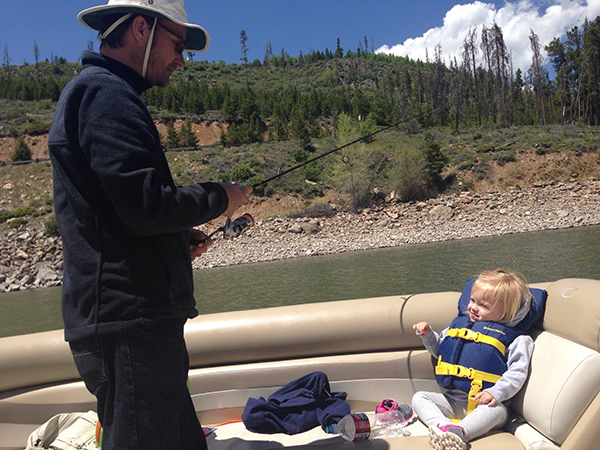
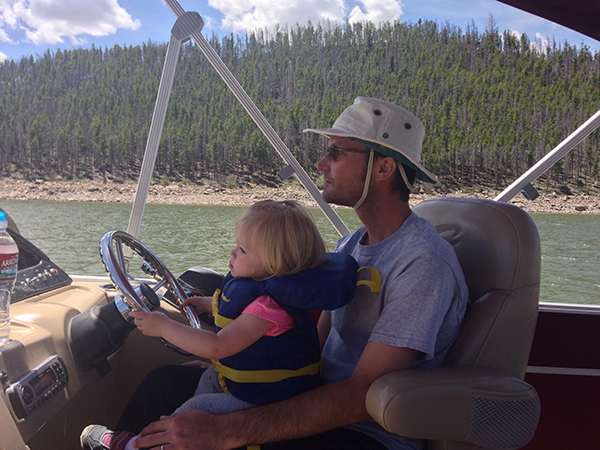






Yeah I know what you mean. #4 one hook for catching the fish the rest for attaching you to the fish. Kind of funny how the experience not only brings perspective, but good times as well. The good old times was maybe not as good as memory served and it is the here and now that is really the best. Nice outing with the family. Thanks for sharing.
Sounds like you caught some family fun as well!
One point I would make. If you ever find yourself out in a mountain lake in a boat don’t cast into the wind. The fishy spots generally aren’t in that direction when you are in a boat.
Baitfish and just about anything else a trout goes after will be blown downwind and stack up in greater concentrations against that shoreline. So find a shore that the wind is blowing onto, stand off of it in the boat, and cast towards it. That’s where you’ll more likely to find feeding fish especially the more predatory trout (smaller Rapalas work great in that situation). You could find yourself holding a 5 lb brown (or larger) in one of those ‘trophy poses’ you talked about in an earlier post!
Another way of fishing in that situation that I’ve also found works is to use a jig head (around 1/8th ounce) with a 2 inch or smaller/bigger generally lighter-colored crappie tube (like a Southern Pro, LipRipperZ or Trout Magnet) on it and hang it 3-6 foot (depends) beneath an appropriate-sized (for the jig weight) float. I use Thill balsa floats and now we’re getting into more complex rigging – they don’t snap on. I only cast about 1/3rd of the way towards shore (try to keep the boat 100 feet or more offshore) and then play out extra line very slowly, keeping ‘in contact’ with the float. The jig/tube will look like a baitfish struggling against the onshore current. And you’ll only be fishing with one hook!
Just be sure you don’t get the boat blown onshore!
Hey Lynn, yeah, I know about fishing downwind. That’s how I normally fish smaller lakes and ponds too. But this wasn’t a “fishing” trip. It was a family trip and fishing was secondary. So, It was more like hanging out with the family and just wetting a line while I’m at it rather than fishing and having the family with me. Had this been strictly a fishing trip, I would have fished like you describe. Plus, the boat didn’t have an anchor so I would constantly be drifting into shore and having to reposition the boat. Not ideal. It’s OK. It was still fun and I didn’t have any expectations of catching a fish on a non-fishing trip. It’s not really my style anyway. Just waiting for the streams to come down to do some tenkara fishing! But after looking at the local creeks, that doesn’t look like it’s going to be any time soon.
I remember fishing one spring day on the Upper Sacramento River. The river was muddy and blown out, but some intrepid fly-fisherman were wading in the dangerous water and struggling to cast in the high wind. Not being a particularly good fly-caster myself, I decided to forgo my fly rod; instead I chose to fish my ultralight, ultracheap WalMart special Ugly Stik and surprisingly precision Zebco reel, topped off by a ridiculously oversized Super Duper. The giant lure on the tiny line cast like a rocket through the wind, and its weight got it down into the fish zone nicely; I landed several fine trout that day, all from shore. I never saw the fly-fisherman catch a thing. I may have been just as successful with some heavily weighted streamers sent into the current via non-casting techniques which I frequently use. However, since that day, I sometimes carry my ultralight spinning rig as a backup to my fly outfit. While I may only fish the spinning rig 2 or 3 times in a year, it does provide some good fun at times when fur and feathers seem to be useless (at least in my hands!)
On my ultralight spinning rig that I use from time to time, I’ve replaced the 4-lb test mono with 4-lb test powerpro microline braid. The stuff has the diameter of 6x or 7x. To that I’ll tie on an ultralight Spro swivel or tippet ring, and put on some bargain bin 3x or 4x tippet for the terminal tackle or lures. The braid is a little pricey compared to your standard mono, but I feel that it’s worth the extra cost especially given the really tight casting tolerances that ultralight/light spinning gear is subject to.